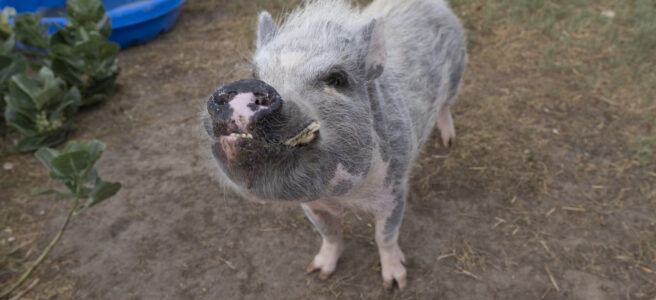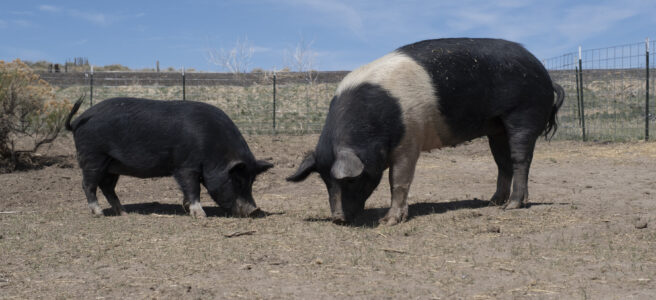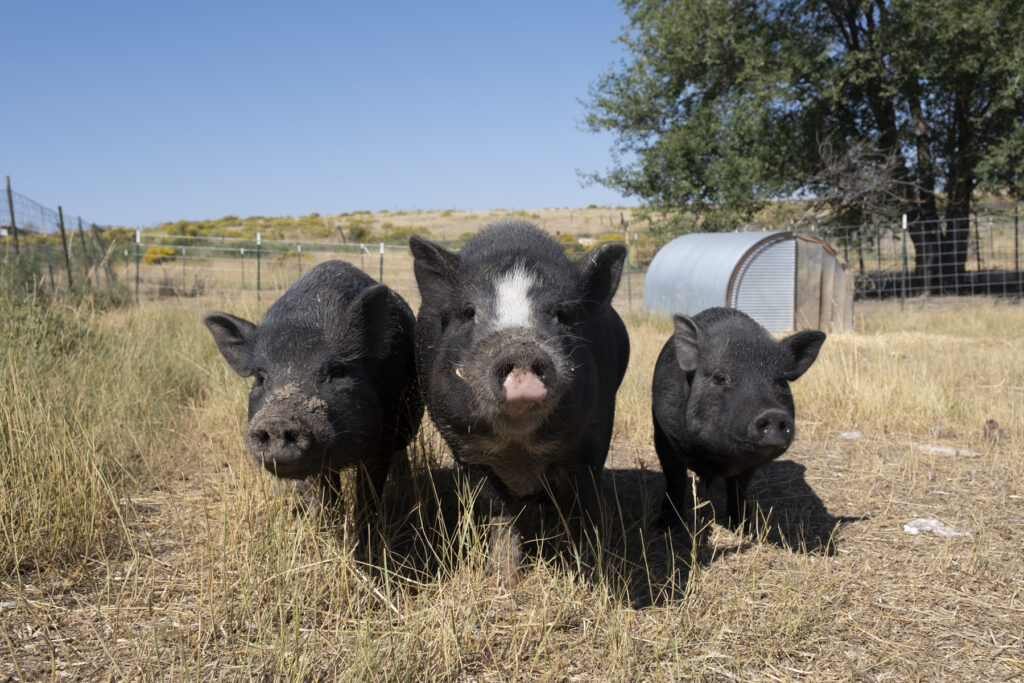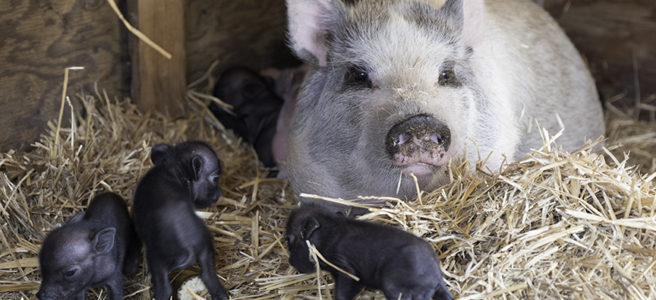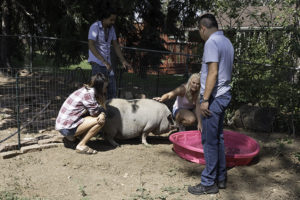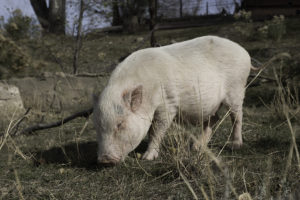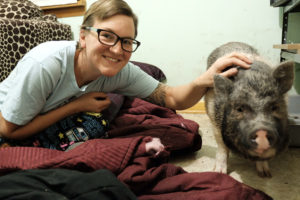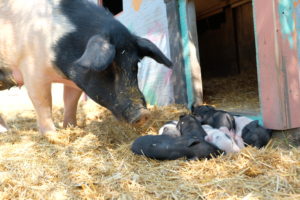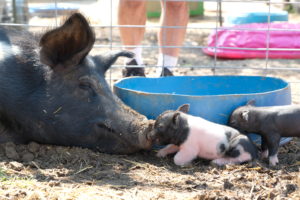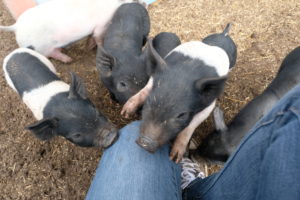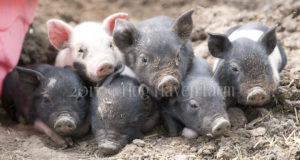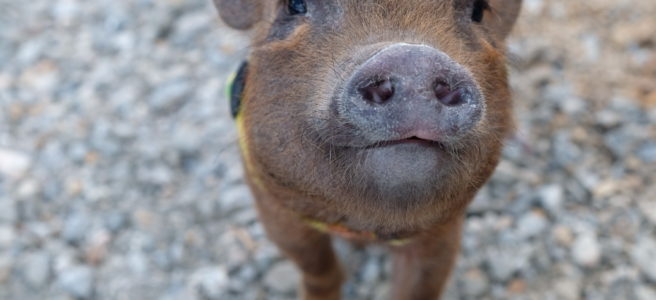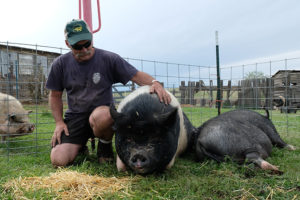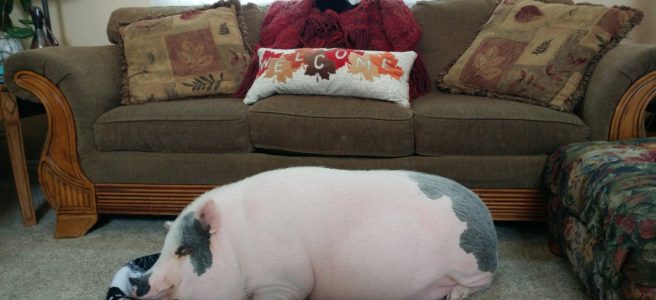A sad beginning, a wonderful ending…the story of rescue, rehabilitation, and adoption of a handsome pig named Leroy, as told by his new human mom, Susan.
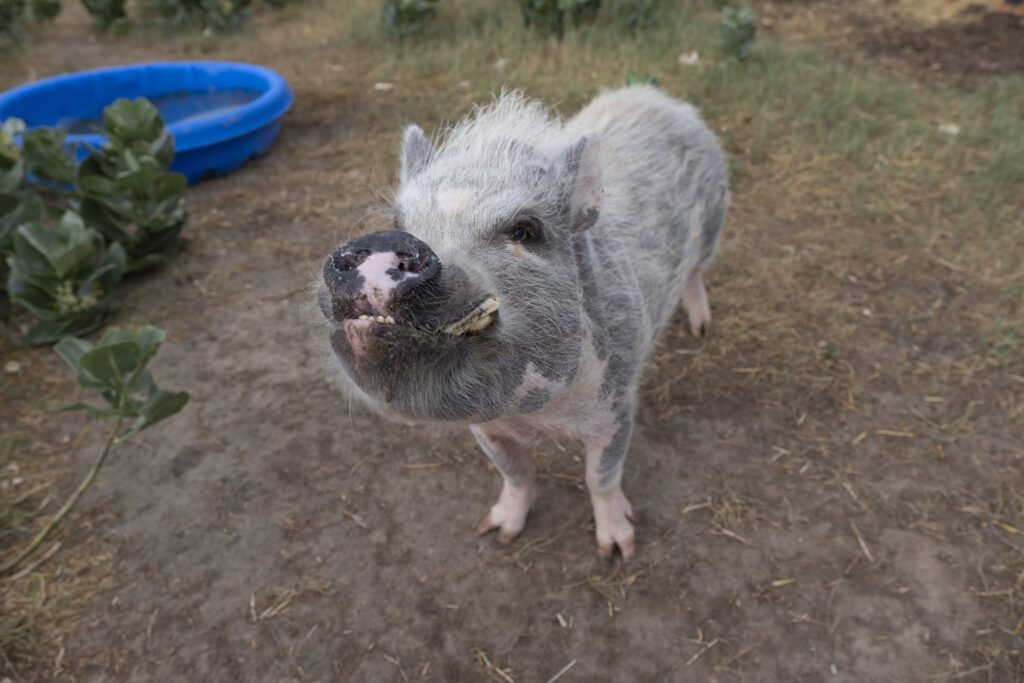
My son David’s 10-year milestone birthday was July 1st this summer. He started wondering what pet he would get to commemorate it months beforehand, because his brother Danny had gotten his cat Serena for his 10th birthday. We had planned on getting Danny a turtle, but ended up adopting our beautiful tortoiseshell huntress—that’s another story. Pigs have long been David’s very favorite animal. He’s done his school reports on pigs, read adult books like “Esther the Wonder Pig”, tells everyone they are the 4th smartest animal, and gave up eating pork 2 years ago. His New Year’s resolution was to convince more people to give up eating pork.
I began looking into adopting or sponsoring a pig. My internet search uncovered Hog Haven Farm (HHF) and I submitted an adoption application. I also stumbled on a breeder’s website that said they sometimes did rehoming/rescue and listed an available pig named “Leya” (no picture). I’m guessing the prior owners had named him “Leia” after Princess Leia, because they told the breeder he was a pregnant female when they surrendered him to her in March (their young boar was mounting him all the time). When I called the breeder, she told me Leia was: “2-3 years old, small—about 40 pounds but should be closer to 50lb since the other pigs keep taking his food, scared and shy, and would really be happiest as the only pig.”
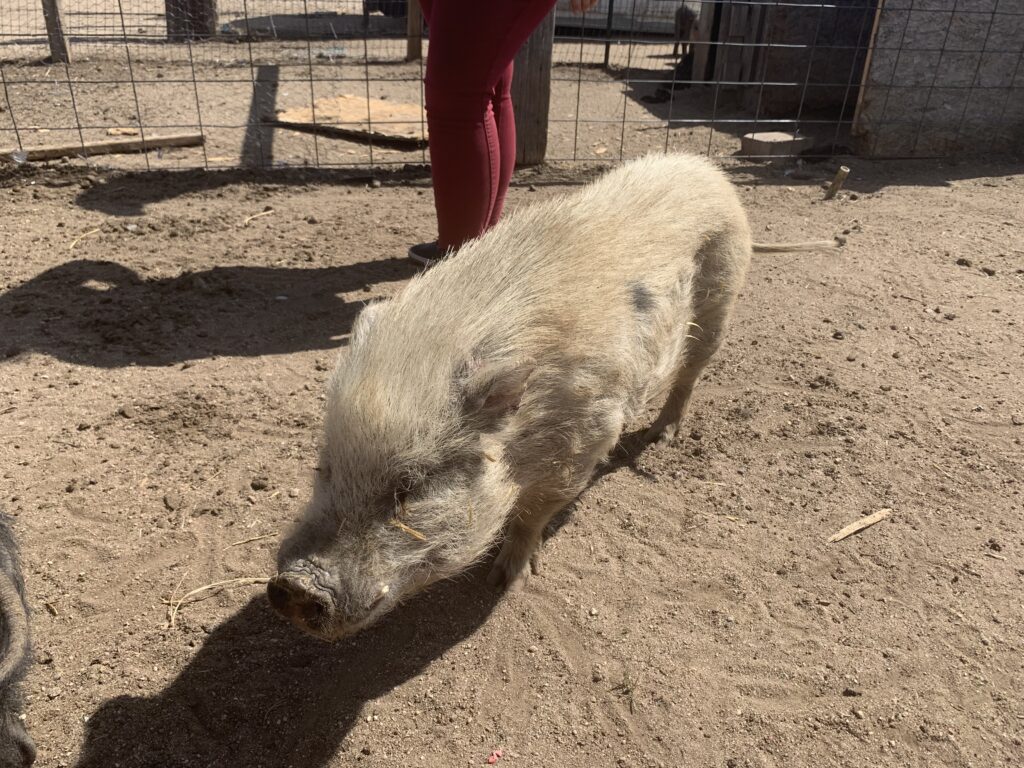
Even though he was younger than I wanted (pigs can live to be 15-20 years!) I decided to visit the breeder. What an experience—animals everywhere: goats, llamas, horses, chickens, turkeys, cats, dogs, and so many pigs. Big pregnant pigs, rutting pigs, young pigs, all going back and forth between pens. She tried to coax Leya to us with an apple, but other pigs butted him out of the way and demanded attention. He ended up finally laying down in a corner out of the way where I could pet him and see how thin he was. The breeder seemed nonchalant and un-invested in Leya—I could purchase him for only $75 (compared to a piglet which cost $600!). She recommended that I contact Erin at HHF, since I was interested in an older pig (they can live to be 20 years!). I told her I had an application in.
After we left, I couldn’t stop thinking about Leya. Meanwhile, my adoption application was approved to Hog Haven Farm, so I visited the next weekend with a friend. What an amazing place–over 120 happy pigs on 40 acres, some adoptable and some lifelong sanctuary pigs. Of the pigs Erin thought would be a good fit for us, my favorite was Chauncey—8 years old, super sweet, with a precious face. He had a sunburn that day, but would poke his head out of his shelter for treats and pets. Erin knew I’d visited Leya and was concerned about his condition and environment. The fact that he hadn’t “blown his coat” suggested he was highly malnourished. I made a plan to buy him from the breeder and bring him to HHF so he could be evaluated. Erin said she could provide him a lifetime home with the expert care that we suspected he would need.
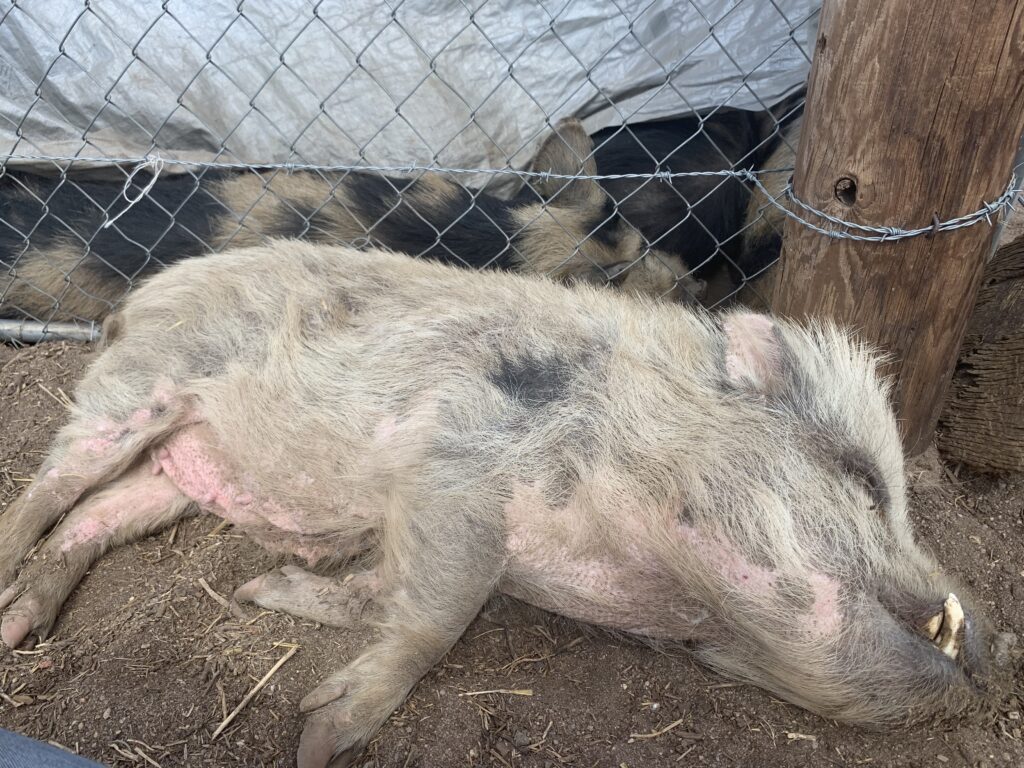
I wanted to make rescuing Leia part of David’s birthday and really wanted my boys to see the contrast between the two environments—the breeder’s (where pigs are a commodity and treated as such) and HHF (where pigs are obviously cherished). David’s birthday was a couple of weeks away, but Erin and I were both concerned about leaving Leia there for that long, so I decided to make it a two-part event. First, we would rescue Leia as soon as possible and get him to Hog Haven, and then later for David’s birthday, we would return to Hog Haven to see how he was doing and consider sponsoring or adopting a pig. In anticipation, I bought a large crate, a harness, and a ramp off of Craigslist, then we headed to the breeder’s early on Wednesday, June 24th.
Leia was even skinnier and dirtier than my last visit, and the boys saw how skittish he was with the other pigs, who continually bullied him. The breeder explained how he was at the bottom of the “pig totem pole” and was constantly being picked on. She said that she’d been feeding him extra to try to make up for it. She quickly got the harness on him and got him loaded into the car (finally gave up on using the ramp and just picked him up). I had already paid for him and there was no paperwork to sign. She gave me her standard “new pig parent booklet” and some de-wormer to put in his food. Finally, we were off to Hog Haven Farm, which was a little over an hour away. During the ride, we tried out different names—I suggested “Leo” as being close to “Leia,” but David tried “Leroy” and our guest seemed to respond to it right away.
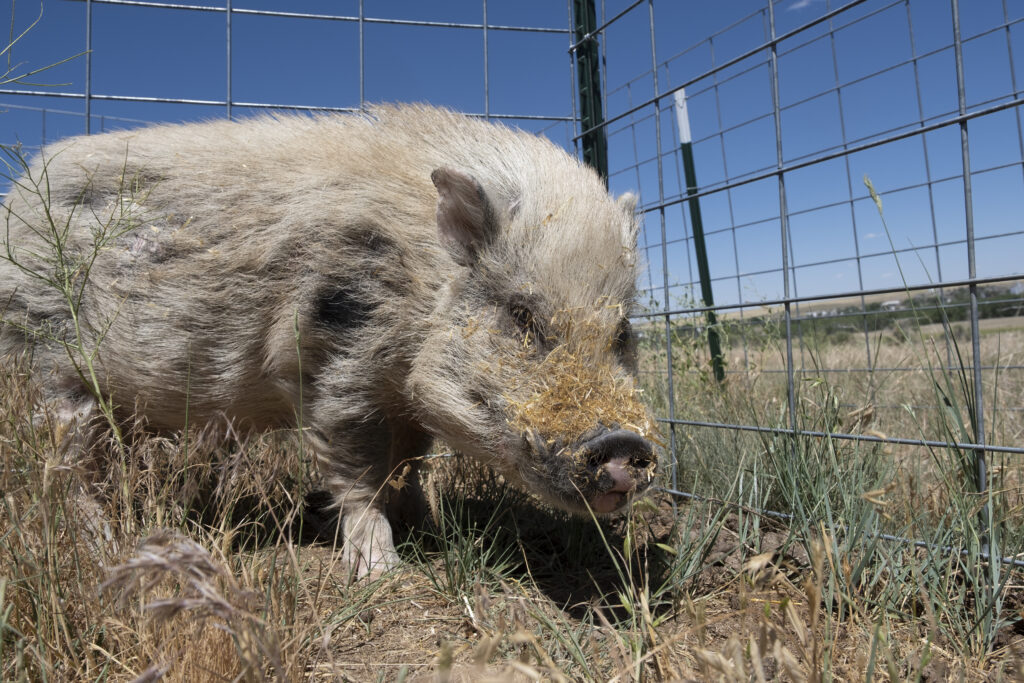
When we arrived at Hog Haven, my son Danny and Erin’s husband Andrew unloaded Leroy from the car to his pen. His happiness and gratitude were totally evident, as he explored his surroundings. He kept coming back to the boys and the goodies they were offering him. Erin was immediately concerned with how underweight Leroy was and noticed that he had a “rickety walk” in his hind legs, characteristic of severely malnourished pigs. Whereas the breeder initially told me he was 40 pounds and 2 – 3 years old, Erin predicted that he was closer to 80 pounds and several years older, based on the length of his tusks and wear on his teeth. She feared he would have ongoing health problems, be susceptible to infections, and have a shortened life based on his poor appearance, scoring him as a “1” on the body conditioning scale for pigs. In the neighboring pen was my buddy Chauncey and his roommate Norman. Chauncey came right out to see what was going on, “hot panted” me a greeting, and hopped into his pool. I visited with him while Leroy acclimated to his new digs.
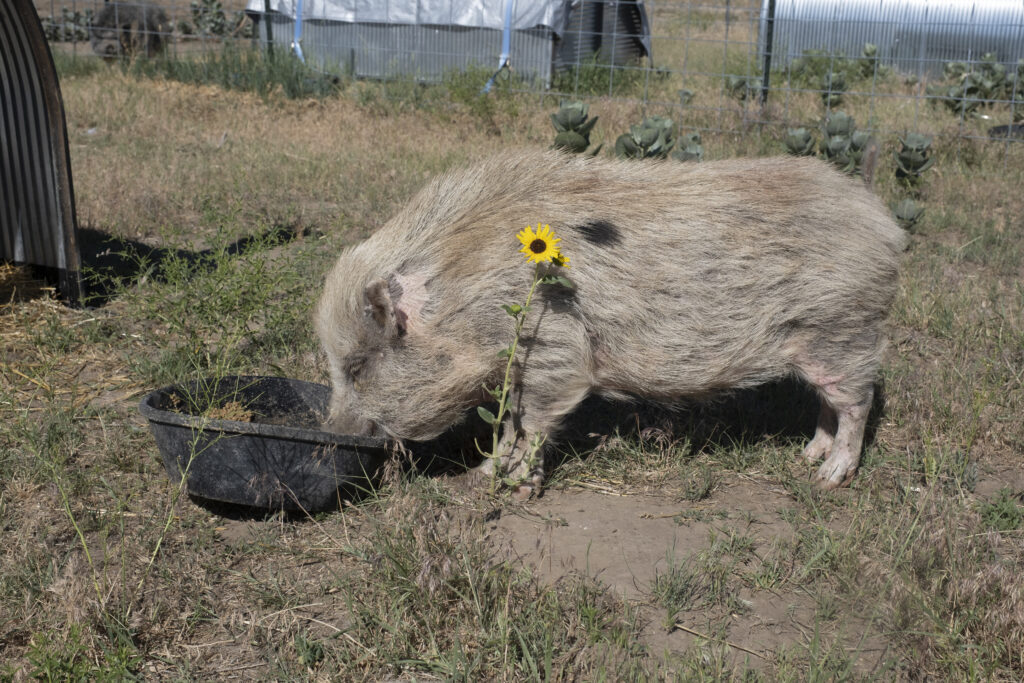
When Erin was able to give Leroy a more thorough exam the next day, she discovered abrasions and hematomas, his hoof was injured, and he had lice. I texted this information to the breeder, and her response was very matter of fact about it all, saying “pigs heal quickly” and she would wait until the weekend to disinfect her facility. Lice are very contagious (to other pigs, but not other animals, thank goodness), and her matter of fact response and lack of concern was upsetting. Leroy had to be moved to the quarantine pen, where he could see the other pigs but couldn’t infect them.
Here he had a cute shelter, pool, and was conveniently close to Erin’s and Andrew’s house. By that weekend, Leroy wasn’t feeling well. Erin suspected that his system was reacting to eating pellets and grazing on grass, and that he was dehydrated. She took him to the vet, where they ran tests and kept him overnight for monitoring. As she’d predicted, his weight was 81 pounds and he scored a 1, the worst possible on the body conditioning scale–his ribs and hip bones could be felt with ease, though the amount of hair covering his body helped obscure these signs of malnourishment. It was scary to think how likely it is that he would have died if I had brought him home after picking him up from the breeder.
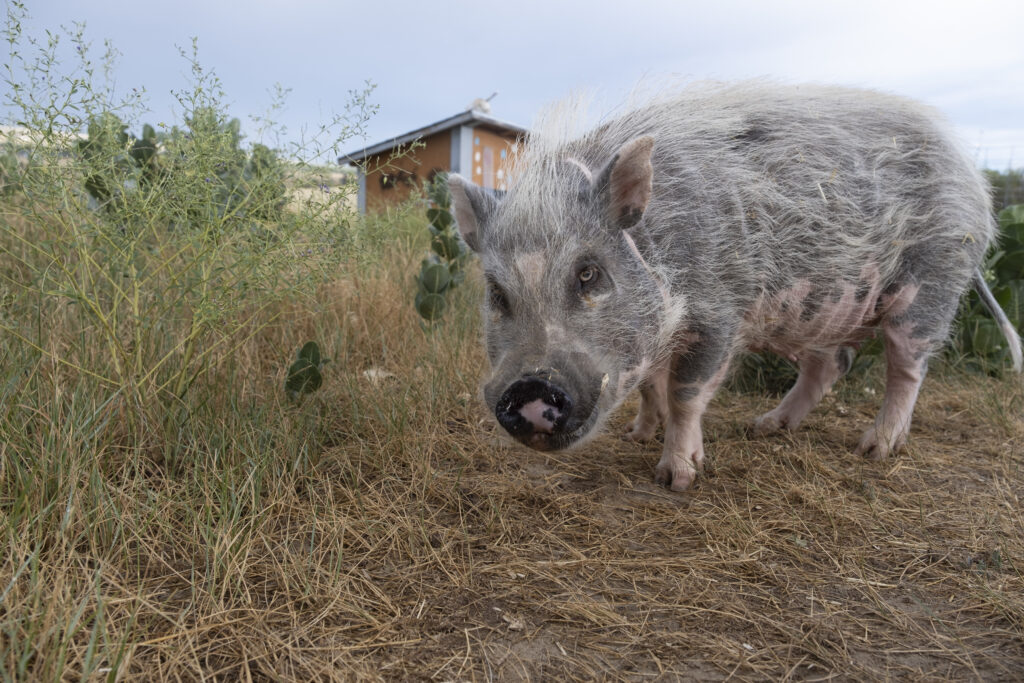
Leroy continued to be on my mind and in my heart, and as he improved at Hog Haven Farm, I started to hope that perhaps we could safely bring him home, particularly if we stayed in close contact with Erin and Andrew. Leroy surprised us all by blowing his coat, an encouraging sign that his condition was really improving–Erin feared he wouldn’t lose his coat at all this year. He looked pretty scraggly when I next visited him, but was as communicative as ever and really wanted scratches. Every visit he jumps up at some point to cool off in his pool. Then he comes back smelling like a wet dog!
Meanwhile, poor Chauncey had to go back to the vet. He skin and eye issues had cleared up but he was losing weight and not feeling well. We were so sad to learn his bloodwork showed a rare autoimmune condition—and one to which one of Chauncey’s peers, Stuart, had sadly just succumbed. Prior to learning this, I started questioning whether Chauncey was the right pig for us to adopt. It felt like he was withdrawing from me more and more each visit. As it turns out, the poor boy was feeling so badly—I know he really wanted to be with his human mama and favorite person, Erin. She is amazing in her expertise and devotion to all her pigs. She concocted delicious, nutritious meals with extra iron and supplements to help him keep weight on and battle the disorder, and Chauncey became an official house pig, at Erin’s side whenever possible.
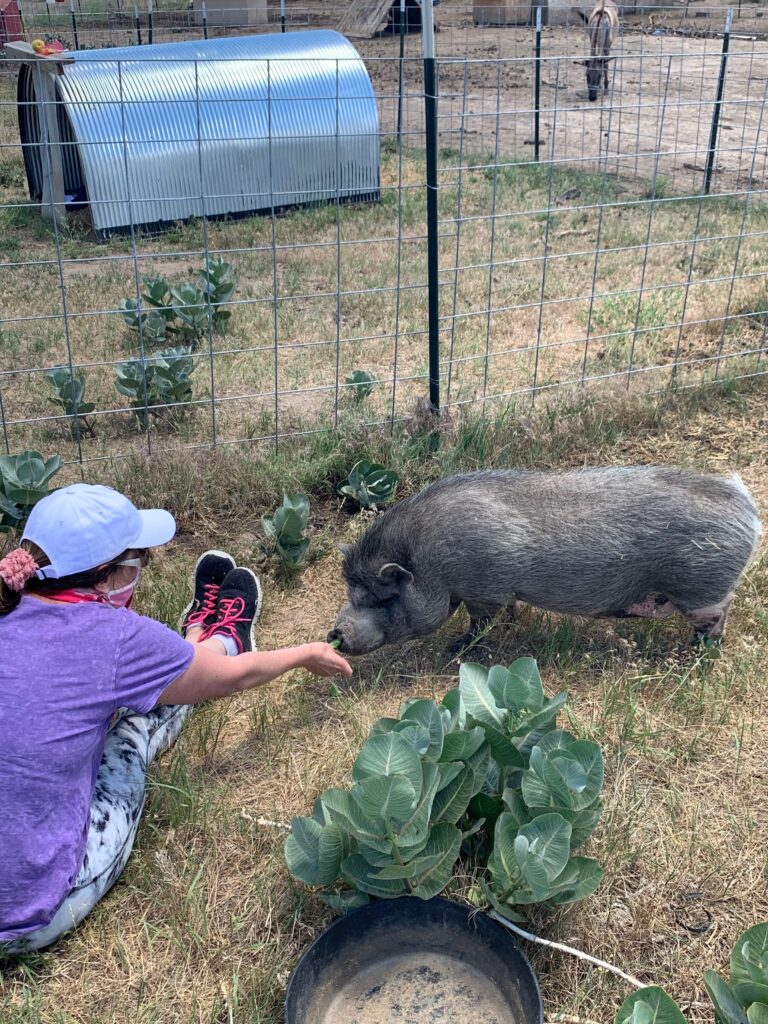
Leroy, on the other hand, continued to greet us every visit, as if he knew we were the ones who brought him to Hog Haven. I was surprised and thrilled when Erin said she thought we could adopt Leroy. I had to persuade David, however, because he selflessly loves Leroy so much–he struggled with believing Leroy should stay at Hog Haven for his own sake. With Leroy’s improved health and the possibility of adopting him, David kept worrying that Leroy had been through too much and would enjoy his life at Hog Haven more than what we could provide him. Forty acres to roam and other pig friends is a pretty awesome way to live, after all. It took Erin telling him that she thought Leroy would have as good a life with us, given all the love and attention we could shower on him, for David to let himself give in to his deep wish that we could bring Leroy home. This felt right, and I knew if Leroy had health problems or was unhappy, Erin would welcome him.
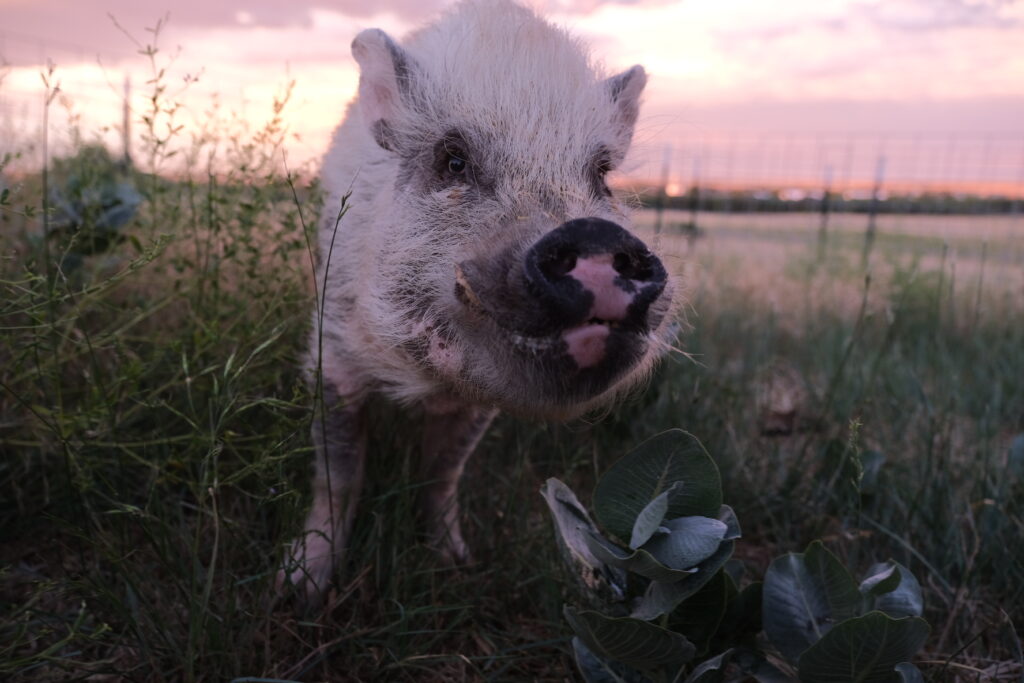
Friday August 24th, adoption day, finally came—exactly two months after we rescued Leroy from the breeder. Even though it was another early start and he still grumped that we were crazy for adopting a pig, Danny wanted to come with us, which made David and I so happy. It seemed to take forever to get everything together (crate, ramp, blankets, harnesses, snacks for humans and pigs, water, etc.) and get to Hog Haven Farm. When we arrived, we spent some time visiting Burgie (sweetest earless rescue found wandering in Grand Junction) and the piglets, Primrose, Ruth, and Florence. The usual crew that always surrounded us wanting treats was there, joined by Magneto, who took a shine to Danny. I keep telling him that if Leroy needs a friend we’ll adopt Magneto for him. Finally, we drove to Leroy’s quarantine pen to load him for the drive home.
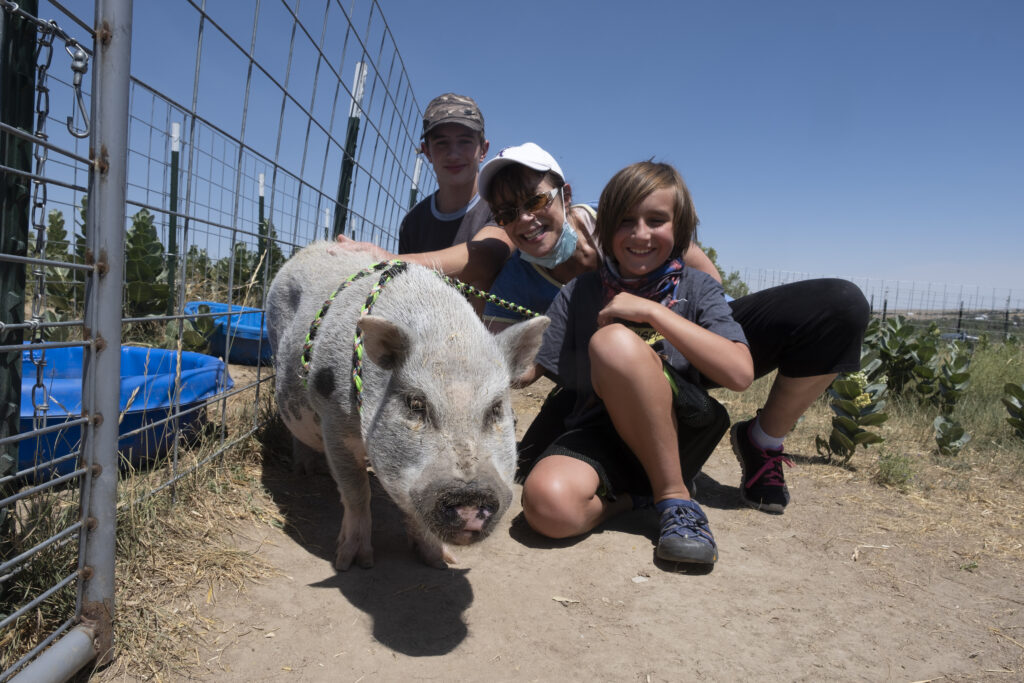
Leroy has now lived at his forever home for one month. From the updates we receive on a regular basis from Susan, it’s very obvious how very loved this special pig is–and his body condition has drastically improved to a 3 on the scoring chart (perfection!). At Hog Haven Farm, we are firm believers that pigs pick their humans–and Leroy clearly made his choice to spend the rest of his natural life with not only the kind family who saved him, but the kind family who loves him unconditionally, ensuring he’ll always have the care, attention, and special snacks.
